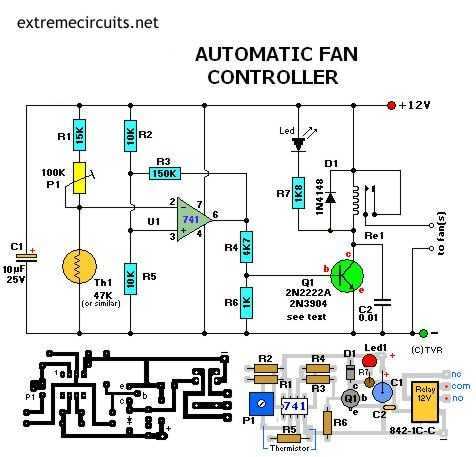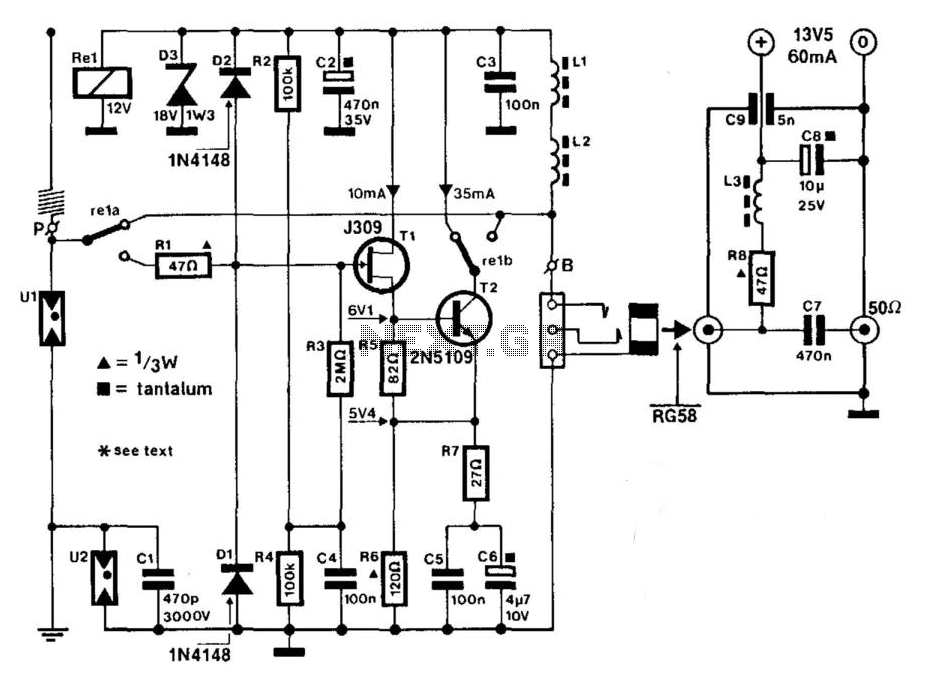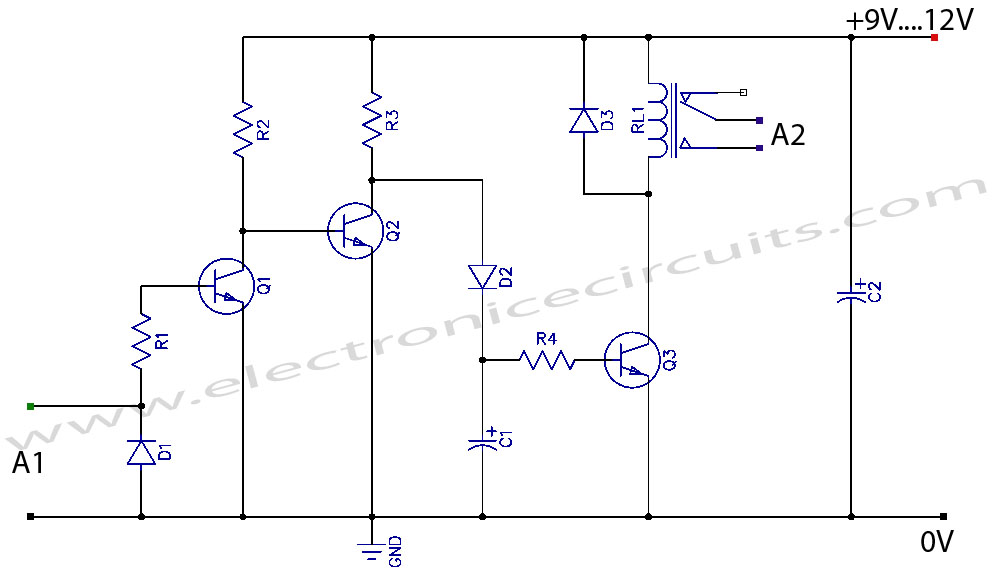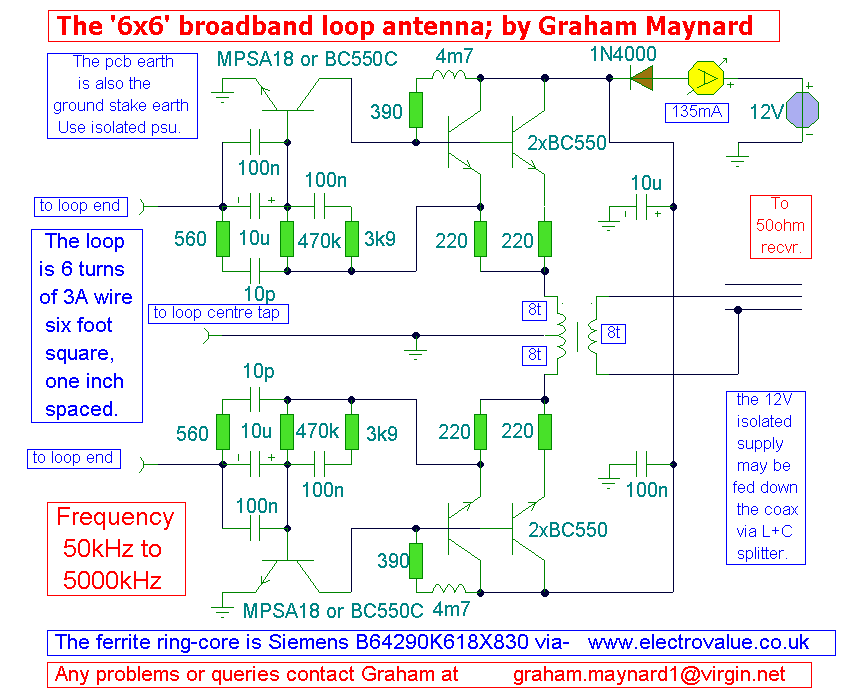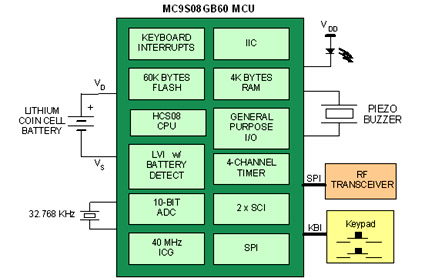
Yaesu G-400 Antenna Rotator Controller
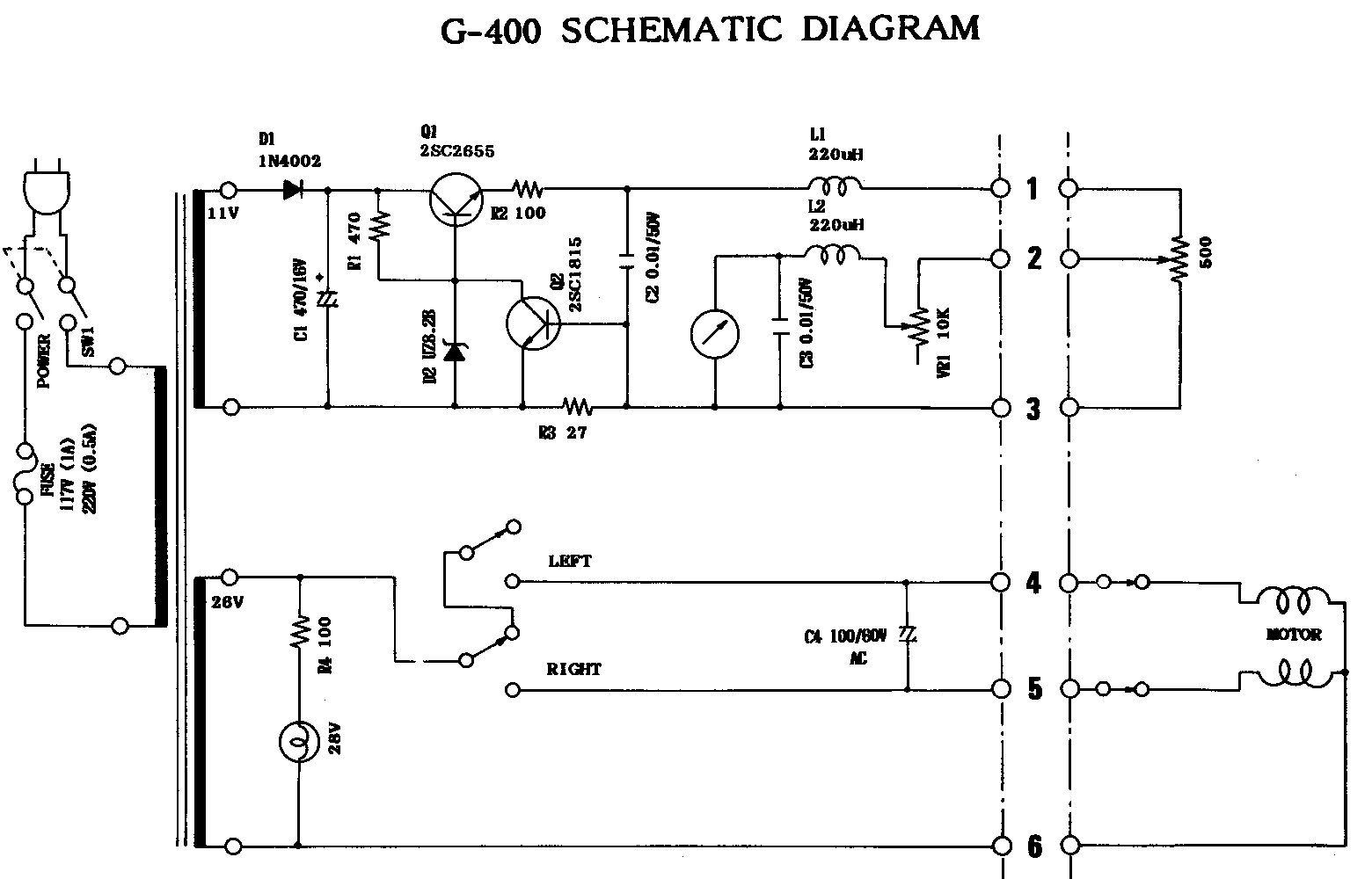
A very simple controller circuit with impressive performance. If a fully automatic computer-controlled rotator is not affordable but enhanced capability is desired from a basic rotator, the ZL1BPU Rotator Controller offers a simple "point and shoot" computer-controlled antenna solution. This controller is designed as an add-on unit for popular Kenpro KR-400 and Yaesu G-400 rotators. It consists of a compact circuit board that fits inside the rotator control box. This unit enables the rotator to gain automatic heading seeking, computer control, and heading control via map clicking or country prefix selection. The ZL1BPU Rotator Controller is compatible with any rotator featuring an AC motor drive and a 500 Ohm feedback potentiometer, such as the CDR CD-44 and the HY-GAIN HAM IV. It operates with both North-centered and South-centered rotators, with only the PC software setting differing. While computer rotator controllers are typically expensive, this one can be constructed for under $50. The supplied firmware supports a specialized command set and responds to SARTEC, ORION, and YAESU commands, ensuring compatibility with most popular multi-function logging and digital mode programs that include rotor control. This controller can also serve as a self-contained replacement for rotators with faulty or missing controllers; only a power supply circuit as shown in the G-400/KR-400 Rotator Schematic is needed, requiring a 24V AC supply, a 6V DC supply, and a 70 - 100 µF AC motor capacitor. The compact circuit board fits inside the rotator control box, powered by the controller's power supply, with no external modifications necessary. Only five wires connect the unit to the existing rotator box, and the serial (PC) control cable can be routed through an existing hole in the back panel. The suggested circuit board is single-sided, measuring 60mm x 60mm (excluding relays), and can be etched or engraved. The board includes an inexpensive microcontroller, a 5V voltage regulator, a simple transistor RS232 interface, and two relay drive transistors for activating the rotator. The relays are interlocked with the existing LEFT and RIGHT switches to prevent motor or controller damage. Heading commands are sent to the unit via the PC serial port from a specialized program, a digital modes or logging program with rotator control, or a simple terminal program. Commands are issued as hexadecimal or decimal numbers, and the controller effectively "pushes the buttons" on the associated rotator control box until the desired heading is achieved. This allows for movement without the need to hold down a button, enabling sophisticated computer applications to control the rotator. Accuracy is primarily determined by the host rotator and control unit, typically offering 2° to 3° heading resolution and about ±5° positioning accuracy. The minimum command to initiate movement is approximately 5°. A heading approached clockwise may differ from the same heading approached counterclockwise by ±5°, which is not problematic for HF beamwidths of 30° or more but may not be suitable for some VHF and UHF terrestrial and satellite systems. The Rotator Controller employs hysteresis through a window comparator technique to prevent hunting and maintain stability, which contributes to the specified heading uncertainty.
The ZL1BPU Rotator Controller circuit design integrates several key components to ensure reliable operation and user-friendly functionality. The microcontroller serves as the central processing unit, executing the command set and managing communication with the PC. The 5V voltage regulator is crucial for supplying stable power to the microcontroller and associated components, ensuring consistent performance. The RS232 interface allows for seamless communication with the PC, enabling the user to send commands effectively.
The relay drive transistors are essential for controlling the rotator's movement. By interlocking with the existing LEFT and RIGHT switches, these relays prevent simultaneous activation, which could lead to damage. This design consideration enhances the robustness of the controller and ensures that it operates safely within the parameters of the existing rotator hardware.
The use of hysteresis in the control algorithm significantly improves the system's stability. By implementing a window comparator technique, the controller minimizes oscillations around the desired heading, which can occur due to minor fluctuations in feedback signals. This feature is particularly beneficial in applications where precision is critical, such as in VHF and UHF communications.
Overall, the ZL1BPU Rotator Controller represents a cost-effective solution for enhancing the capabilities of existing rotator systems. Its design allows for easy integration, minimal modifications to existing hardware, and compatibility with a wide range of rotators, making it an attractive option for amateur radio operators looking to upgrade their equipment without incurring high costs.A very simple controller circuit, with fairly smart performance! Can`t afford a fully automatic computer controlled rotator, but would like more capability from your basic rotator Would you like a simple to use "point and shoot" computer controlled antenna You`ve come to the right place! The ZL1BPU Rotator Controller has been designed as an add-on unit for the popular Kenpro KR-400 and Yaesu G-400 rotators. The controller consists of a small circuit board which fits inside the rotator control box (see picture). With this unit the rotator gains automatic heading seeking, computer control, and even heading control by clicking on a map or selecting a country prefix!
The ZL1BPU Rotator Controller should work with any rotator with AC motor drive and a 500 Ohm feedback pot, such as the CDR CD-44 and the HY-GAIN HAM IV. It will also operate with both North-centred and South-centred rotators, as only the PC software setting changes.
Computer rotator controllers tend to be expensive - however you can build this one for under $50! The firmware supplied supports a rich specialized command set and also responds to SARTEC, ORION and YAESU commands, making it compatable with most popular multi-function logging and digital mode programs that feature rotor control. The controller could also form the basis of a self-contained replacement controller, for rotators with faulty or missing controllers.
Just add the power supply circuitry shown in the G-400/KR-400 Rotator Schematic - all you really need is a 24V AC supply, a 6V DC supply, and a 70 - 100 uF AC motor capacitor. The small circuit board can be fitted inside the rotator control box, and operates from the controller`s power supply.
No holes need be made in the box, and all modifications are internal and reversible if the need arises. There are only five wires between the unit and the existing rotator box. The serial (PC) control cable can sneak out the back panel through an existing hole. The suggested circuit board is single sided, 60mm x 60mm (without the relays), and can be etched or engraved.
See the picture to the right, which is larger than life-sized. The board contains an inexpensive micro controller, a 5V voltage regulator, a simple transistor RS232 interface, and two relay drive transistors to activate the rotator. The relays are interlocked with the existing LEFT and RIGHT switches, so there is no possibility of motor or controller damage.
The unit is given heading commands via the PC serial port, from a special program, a digital modes or logging program with rotator control, or a simple terminal program. The commands are in the form of hexadecimal or decimal numbers, depending on the protocol, and the controller in effect "pushes the buttons" on the associated rotator control box until the requested heading is reached.
This means that it will go to the correct heading without the need for a button to be held down to keep the rotator moving. It also allows for sophisticated computer applications to control the rotator. Accuracy is limited mostly by the host rotator and control unit. Typically 2 ° to 3 ° heading resolution and about ±5 ° positioning accuracy. The smallest command that will cause movement is about 5 °. A heading approached from clockwise may differ from the same heading approached from anticlockwise by ±5 °.
Hardly a problem with HF beamwidths of 30 ° or more, but not appropriate for some VHF and UHF terrestrial and satellite systems. The Rotator Controller uses hysteresis through the use of a window comparator technique, to prevent hunting and poor stability, which results in the heading uncertainty specified.
The hysteresis could be re 🔗 External reference
The ZL1BPU Rotator Controller circuit design integrates several key components to ensure reliable operation and user-friendly functionality. The microcontroller serves as the central processing unit, executing the command set and managing communication with the PC. The 5V voltage regulator is crucial for supplying stable power to the microcontroller and associated components, ensuring consistent performance. The RS232 interface allows for seamless communication with the PC, enabling the user to send commands effectively.
The relay drive transistors are essential for controlling the rotator's movement. By interlocking with the existing LEFT and RIGHT switches, these relays prevent simultaneous activation, which could lead to damage. This design consideration enhances the robustness of the controller and ensures that it operates safely within the parameters of the existing rotator hardware.
The use of hysteresis in the control algorithm significantly improves the system's stability. By implementing a window comparator technique, the controller minimizes oscillations around the desired heading, which can occur due to minor fluctuations in feedback signals. This feature is particularly beneficial in applications where precision is critical, such as in VHF and UHF communications.
Overall, the ZL1BPU Rotator Controller represents a cost-effective solution for enhancing the capabilities of existing rotator systems. Its design allows for easy integration, minimal modifications to existing hardware, and compatibility with a wide range of rotators, making it an attractive option for amateur radio operators looking to upgrade their equipment without incurring high costs.A very simple controller circuit, with fairly smart performance! Can`t afford a fully automatic computer controlled rotator, but would like more capability from your basic rotator Would you like a simple to use "point and shoot" computer controlled antenna You`ve come to the right place! The ZL1BPU Rotator Controller has been designed as an add-on unit for the popular Kenpro KR-400 and Yaesu G-400 rotators. The controller consists of a small circuit board which fits inside the rotator control box (see picture). With this unit the rotator gains automatic heading seeking, computer control, and even heading control by clicking on a map or selecting a country prefix!
The ZL1BPU Rotator Controller should work with any rotator with AC motor drive and a 500 Ohm feedback pot, such as the CDR CD-44 and the HY-GAIN HAM IV. It will also operate with both North-centred and South-centred rotators, as only the PC software setting changes.
Computer rotator controllers tend to be expensive - however you can build this one for under $50! The firmware supplied supports a rich specialized command set and also responds to SARTEC, ORION and YAESU commands, making it compatable with most popular multi-function logging and digital mode programs that feature rotor control. The controller could also form the basis of a self-contained replacement controller, for rotators with faulty or missing controllers.
Just add the power supply circuitry shown in the G-400/KR-400 Rotator Schematic - all you really need is a 24V AC supply, a 6V DC supply, and a 70 - 100 uF AC motor capacitor. The small circuit board can be fitted inside the rotator control box, and operates from the controller`s power supply.
No holes need be made in the box, and all modifications are internal and reversible if the need arises. There are only five wires between the unit and the existing rotator box. The serial (PC) control cable can sneak out the back panel through an existing hole. The suggested circuit board is single sided, 60mm x 60mm (without the relays), and can be etched or engraved.
See the picture to the right, which is larger than life-sized. The board contains an inexpensive micro controller, a 5V voltage regulator, a simple transistor RS232 interface, and two relay drive transistors to activate the rotator. The relays are interlocked with the existing LEFT and RIGHT switches, so there is no possibility of motor or controller damage.
The unit is given heading commands via the PC serial port, from a special program, a digital modes or logging program with rotator control, or a simple terminal program. The commands are in the form of hexadecimal or decimal numbers, depending on the protocol, and the controller in effect "pushes the buttons" on the associated rotator control box until the requested heading is reached.
This means that it will go to the correct heading without the need for a button to be held down to keep the rotator moving. It also allows for sophisticated computer applications to control the rotator. Accuracy is limited mostly by the host rotator and control unit. Typically 2 ° to 3 ° heading resolution and about ±5 ° positioning accuracy. The smallest command that will cause movement is about 5 °. A heading approached from clockwise may differ from the same heading approached from anticlockwise by ±5 °.
Hardly a problem with HF beamwidths of 30 ° or more, but not appropriate for some VHF and UHF terrestrial and satellite systems. The Rotator Controller uses hysteresis through the use of a window comparator technique, to prevent hunting and poor stability, which results in the heading uncertainty specified.
The hysteresis could be re 🔗 External reference
